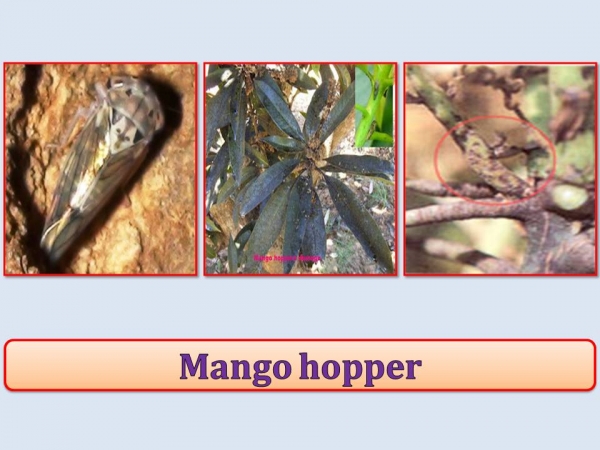
Nature of Damage:
-----------------
Heavy egg laying within florets and stalk lets because physical injury, resulting in withering of affected parts.
Mango hoppers are the most destructive pests of fruit trees. Injury to the inflorescence and the young shoots is caused by egg-laying and feeding. The voracious feeding nymphs are particularly harmful.
They cause the inflorescence to wither and turn brown. Even if the flowers are fertilized, the subsequent development and fruit-setting may cease. In thick and protected gardens where the atmosphere is humid, a sooty mould develops on patches of honeydew, exuded by the nymphs.
As the wind blows, young fruits and dried inflorescences break off at the axil and fall to the ground. The growth of the young trees is much retarded and the older trees do not bear much fruit.
Damage to the mango crop may be as high as 60 per cent.
Management:
------------
Keeping the orchards clean and avoiding overcrowding of the trees and water-logging keeps the pest at bay.
Susceptible variety: Alphonso, Sardar and Langdo. Off seasonal spray with carbaryl 50 % WP (0.20 %) during the month of October on trunks of the trees to manage the hibernating population which delaying the population development.
Before flowering spraying the crop with deltamethrin 2.8 EC – 3 ml or cypermethrin 25 % EC – 1.2 ml or alphamethrin 10 % EC – 1.7 ml in 10 lit. water. Avoid the spraying during flowering.
Use safer insecticide like phosalone 35 EC 21 ml in 10 lit of water. Other insecticides viz., imidacloprid 17.8 % SL– 2.8 ml or fenobucarb 50 % EC – 20 ml or quinalphos 25 % EC – 25 ml in 10 lit of water also found effective for the control of mango hopper.

